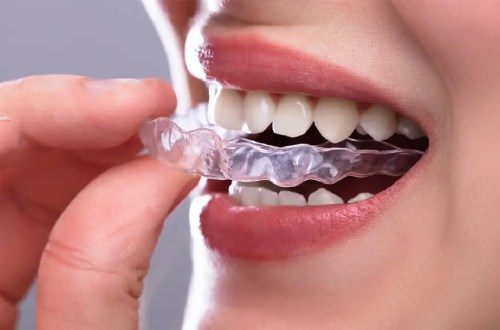Beginning orthodontic treatment can be an exciting milestone, marking the start of a journey towards a healthier, more confident smile. However, as your teeth begin to shift and align, you may experience some discomfort or tooth pain. At Los Gatos Orthodontics, we understand that managing tooth pain is a crucial part of ensuring a successful and comfortable orthodontic treatment experience.
In this article, we’ll explore the common causes of tooth pain during orthodontic treatment, discuss effective management strategies, and provide valuable tips and remedies to help you navigate this challenging phase of your orthodontic journey.
Exploring Orthodontic Braces
Orthodontic braces are specialized dental appliances designed to correct misalignments, irregularities, and other imperfections in the teeth and jaw. Typically consisting of brackets, wires, and elastic bands, orthodontic braces work by applying gentle, sustained pressure to the teeth, gradually shifting them into proper alignment. By correcting issues such as overcrowding, gaps, overbites, and underbites, orthodontic braces can improve the appearance, function, and overall health of the teeth and mouth, leading to a more confident, radiant smile.
Understanding Tooth Pain During Orthodontic Treatment
Tooth pain during orthodontic treatment is usually caused by the movement of teeth, which can lead to inflammation and irritation of the surrounding tissues. This discomfort can manifest in various ways, including:
- Pressure and tension: As teeth move into their new positions, they can exert pressure on the surrounding gums, bones, and ligaments, leading to feelings of tension and discomfort.
- Inflammation and irritation: The movement of teeth can cause inflammation and irritation of the gums, leading to pain, swelling, and redness.
- Tooth sensitivity: Orthodontic treatment can sometimes cause tooth sensitivity, especially when teeth are moving rapidly or when the enamel is worn down.
What Are Some Effective Management Strategies For Tooth Pain During Orthodontic Treatment?
While tooth pain during orthodontic treatment is common, several effective management strategies can help alleviate discomfort and make the treatment process more manageable. Some of these strategies include:
- Over-the-counter pain relievers: Over-the-counter pain relievers such as ibuprofen (Advil, Motrin) or acetaminophen (Tylenol) can help alleviate tooth pain and discomfort.
- Warm salt water rinses: Rinsing your mouth with warm saltwater can help reduce inflammation and ease pain.
- Cold compresses: Applying a cold compress to the affected area can help numb the pain and reduce swelling.
- Orthodontic wax: Applying orthodontic wax to the affected area can help cushion the teeth and reduce irritation.
- Dietary modifications: Avoiding hard, sticky, or chewy foods can help reduce discomfort and prevent further irritation.
Additional Remedies and Tips
In addition to the management strategies mentioned above, several additional remedies and tips can help alleviate tooth pain during orthodontic treatment. Some of these include:
- Desensitizing toothpaste: Using a desensitizing toothpaste can help reduce tooth sensitivity and alleviate pain.
- Mouthguards: Wearing a mouthguard can help protect your teeth and gums from further irritation and injury.
- Regular dental check-ups: Regular dental check-ups can help identify any underlying issues that may be contributing to tooth pain and discomfort.
- Relaxation techniques: Practicing relaxation techniques such as deep breathing, meditation, or yoga can help reduce stress and alleviate pain.
- Communication with your orthodontist: Keeping your orthodontist informed about any discomfort or pain you’re experiencing can help them adjust your treatment plan and provide additional guidance and support.
Bottom Line
Tooth pain during orthodontic treatment is a common experience, but it doesn’t have to be debilitating. By understanding the causes of tooth pain, using effective management strategies, and incorporating additional remedies and tips, you can alleviate discomfort and make the treatment process more manageable. Remember to communicate openly with your orthodontist, practice good oral hygiene, and take care of your overall health to ensure a successful and comfortable orthodontic treatment experience.






